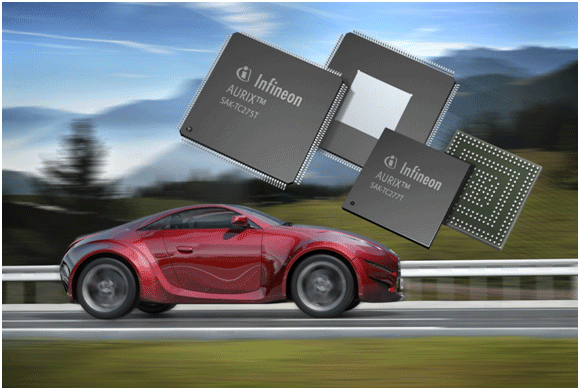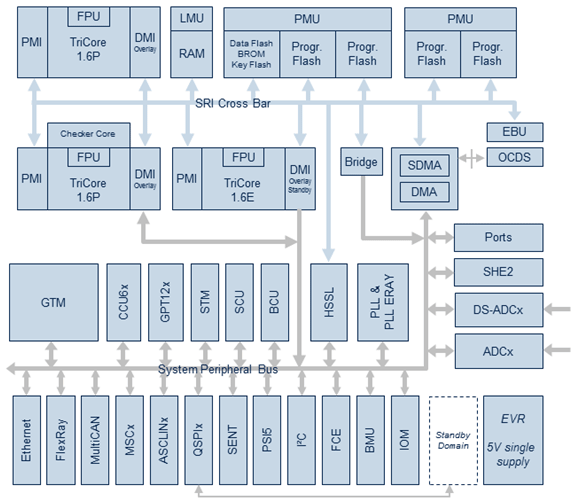The article discusses the Multicore computing platform for high performance Powertrain and Safety applications for the Indian Automotive Industry
 In recent decades, the development of the motor vehicle has been primarily driven by the introduction of electronics. At first, electronic systems were used to control the engine. Then electronic components entered the domain of driving safety. More recently, new fields of application have emerged in the areas of driving assistance, infotainment and communication as a result of continuous advancements in semiconductor technology.
In recent decades, the development of the motor vehicle has been primarily driven by the introduction of electronics. At first, electronic systems were used to control the engine. Then electronic components entered the domain of driving safety. More recently, new fields of application have emerged in the areas of driving assistance, infotainment and communication as a result of continuous advancements in semiconductor technology.
The need for high performance and energy efficiency has been the buzz word in the Indian Automotive Industry. The Indian Automotive Industry is looking into various technologies to make their engines more efficient and the vehicles safer not only for the drivers and passengers but also for pedestrians and other road users. If the Indian Automotive Industry succeeds in leap-frogging through technologies to provide a cleaner, safer and more secure environment, it would be a long lasting legacy that the current and future generations would cherish.
A typical feature of many of these new systems is that they no longer perform their function as standalone systems but operate in interaction with other systems. Powerful electronic systems not only require information about operating states, but also data from the vehicle’s surroundings.
The complexity of the vehicle system is set to increase. To guarantee operational reliability in view of this complexity, new methods of electronics development are called for. Besides the innovations in the areas of comfort/convenience and safety, in India there is a topic that stands out in view of high fuel prices and fuel consumption.
The proportion of electronics results mainly from the growth of electronic systems in the areas of safety, comfort and convenience. To fulfil these requirements in the face of increasing complexity of the vehicle systems, microcontroller based electronic systems become more important. For this reason, the development of software will also continue to gain in importance in future.
Single core computing has dominated this space till yesteryears; with the changing requirements of the Auto Industry and the demands of the customer it has become a dire need to improvise the performance, safety and efficiency of these systems. Apart from this the drive to make the cleaner and greener environment is also a major incentive for the Vehicle manufacturers to adapt to new and efficient technologies. One of the requirements of electronic systems is real-time capabilities; the complexity of an electronic system therefore makes extremely high demands on the software that is developed.
AURIX is Infineon’s new family of microcontrollers to serve the needs of the automotive industry in terms of performance and safety; these microcontrollers are based on the TriCore architecture and provide high level of real-time-behaviour and high performance, targeted for automotive applications and the focus is on Powertrain, Body applications and Safety applications like Braking, Power Steering and Advanced Driver Assistance.
The multicore architecture features up to three processor cores to share the application load, introduces lockstep cores and contains further enhanced hardware safety mechanisms to fulfil the requirements of the most demanding embedded control applications. Price, performance, predictable real-time behaviour, data bandwidth and power consumption are the competing key features. Furthermore, specialized peripherals, e.g. for timing and security, make the AURIX MCUs the first choice in many different application domains.
 Aurix Built for Performance, safety and security
Aurix Built for Performance, safety and security
Based on the existing TriCore™ processor of Infineon, the new multicore architecture sets another benchmark for real-time performance in automotive applications. It contains up to three TriCore processor cores connected over a crossbar running at the full CPU speed and avoiding hardware contentions. Additionally, the architecture implements multiple program Flash modules with independent read interfaces which further support the real-time capability.
The 65nm embedded Flash silicon process technology and the microcontroller architecture are designed to balance increased performance with the need for lower power consumption. Additional low power modes are supported to enable very low standby current consumption.
The embedded Flash technology is designed for highest reliability, the End-of-line programming speed of the embedded Flash is up to 20 times faster than in the previous generation of microcontrollers.
Multicore architecture introduces leading edge methods to efficiently meet the newly introduced ISO 26262 Automotive safety standard. Two of the three TriCore CPUs feature additional Lockstep cores which can be independently configured, a distributed memory protection system operates on core level, bus level and on peripheral level. These enhanced encapsulation techniques allow the integration of software with mixed criticality levels from different sources, allowing seamless hosting of multiple applications and operating systems on a unified platform.
The multicore architecture features a hardware security module (HSM) to meet upcoming security requirements to better protect automotive applications from tampering or potential hacking attacks. The HSM uses leading edge hardware-based security technology developed by Infineon
Software paradigms
Key to exploiting multi-core is the decomposition of the application tasks and interrupts handlers into smaller components that communicate with each other. These components are then distributed onto the available computing resources.
OSEK, AUTOSAR and many other approaches to automotive ECU software development are based upon the idea of static (i.e. compile-time) configuration. Changing the configuration of the system whilst it is running is too complex and expensive. So the distribution of workload to cores is static and this implies that the communications matrix between the cores is also static.
If the OS supports the same model of tasks, interrupt handlers, etc. in a multi-core system as in a single-core system then the main differences are only seen in the communications between cores.
 About Author
About Author
Deepak K Purushotham, System application Engineer, Infineon Technologies India








